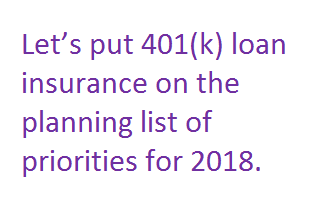Across the country summer is winding down, football is back in season and parents are buying the latest backpacks and notebooks their children need for school. Another fall ritual? Business planning to identify and finalize priorities for the coming year.
In particular, business planning helps retirement services firms identify initiatives that align with their strategic priorities, including products and services they believe will improve their competitive advantage. The stakes are high: offering the right program can create a lasting advantage enabling firms to stand out or reach a new industry standard faster than the competition.
One area everyone seems to be focused on is the need to improve retirement outcomes, often referred to under the broader umbrella of financial wellness. Improving financial wellness and retirement outcomes ranks high on plan sponsor surveys (as does decreasing regulatory risk) and is regularly covered in industry publications and conferences.
Encouraging employees to pursue long-term financial goals like retirement has always been an industry focus, but traditional efforts have failed to acknowledge their present-day reality: Employees are struggling with financial stress. According to a recent report, 78 percent of full-time workers say they live paycheck to paycheck. 1 Financial wellness seminars and budgeting tools are a step in the right direction, but are undermined by retirement plan leakage.
It’s time to look for other solutions. One answer might be more obvious than we realize.
The overlooked issue of loan defaults
Let’s take stock of our 401(k) plans’ effectiveness before devoting time and energy to broader programs. Take loans as one example. Industry pundits bring up loans regularly, often encouraging plan sponsors to adopt various ‘best practices’ that attempt to discourage the amount of loans that a plan sponsor grants. This guidance is well intentioned but misses the mark: loans are not an issue –and they encourage plan participation– as long as they are repaid. Loan defaults, however, are always a problem.
Preserving assets in the event of a loan default is an often-overlooked fiduciary obligation under ERISA. And plan sponsors are at greater risk of an audit, according to Department of Labor guidance that loan defaults are on their radar.
It turns out retirement plans unnecessarily distribute billions of dollars early each year due to loan defaults, most often through loan offsets after employees have lost their jobs, making this form of leakage a growing concern. The issue is bigger than many retirement plan sponsors realize: A Wharton study found that $6 billion in participant 401(k) loans default annually, and that 86% of loans default when participants lose their jobs and are unable to repay. 2
The fallout from this leakage has largely gone unnoticed because only 8% of loan defaults are separately reported on Form 5500 (the rest fall under the general category ‘benefit payments’). What’s more, when faced with hefty taxes and penalties, most participants who default on their loans go on to cash out their entire retirement accounts, forfeiting years of savings and potential earnings over their career – money and time they can never get back. For example, even a relatively small $5,000 loan can cost a borrower more than $100,000 if they cash out their account.3
Loan defaults are preventable
It also turns out that loan defaults are a preventable form of plan leakage. That’s why one new product attracting serious attention is 401(k) loan insurance.
Loan insurance acts as a safety net, protecting plans from loss by repaying an outstanding loan balance before it defaults if a borrower is laid off. The program can be offered as a simple add on to existing loan programs; the loan protection is borrower-paid and automatically included when a participant takes a loan.
Preventing loan defaults enables recordkeepers to retain assets that would otherwise be distributed and streamlines their back office. Loan insurance also puts plan sponsors in a stronger fiduciary position by helping them preserve account balances as outlined in ERISA.
Plan sponsors are increasingly interested in programs that show measurable results for their participants. The return on investment for financial wellness programs is still undetermined. But the savings to participant retirement accounts and plan assets through simple loan insurance is quantifiable: increased plan balances and greater assets on the books.
Retirement is too important not to protect. Why do nothing and continue this unnecessary leakage? Low cost 401(k) loan insurance, like automatic enrollment years before, has the potential to boost retirement incomes in a meaningful way. Now that’s something worth planning for.
About the Author:
George White is the Chief Operating Officer of Custodia Financial, creator of Retirement Loan Eraser (RLE). He can be reached at gwhite@custodiafinancial.com.
As seen in 401(k) Wire.
- Dickler, Jessica, “Most Americans live paycheck to paycheck,” CNBC, August 24, 2017
- Borrowing from the Future: 401(k) Plan Loans and Loan Defaults, 2014 Vanguard Wharton Study
- Future loan value based on 42-year-old borrower retiring at 67. Assumes borrower with unprotected 401(k) loan fully cashes out after job loss. Earnings rate 7%.


